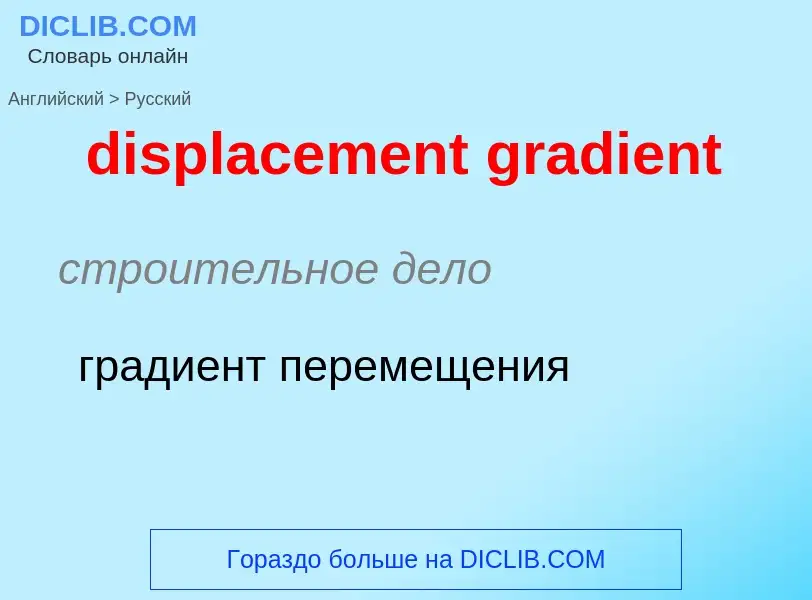Translation and analysis of words by ChatGPT artificial intelligence
On this page you can get a detailed analysis of a word or phrase, produced by the best artificial intelligence technology to date:
- how the word is used
- frequency of use
- it is used more often in oral or written speech
- word translation options
- usage examples (several phrases with translation)
- etymology
displacement gradient - translation to russian
строительное дело
градиент перемещения
общая лексика
нормальное водоизмещение
Definition
Wikipedia
In geometry and mechanics, a displacement is a vector whose length is the shortest distance from the initial to the final position of a point P undergoing motion. It quantifies both the distance and direction of the net or total motion along a straight line from the initial position to the final position of the point trajectory. A displacement may be identified with the translation that maps the initial position to the final position.
A displacement may be also described as a relative position (resulting from the motion), that is, as the final position xf of a point relative to its initial position xi. The corresponding displacement vector can be defined as the difference between the final and initial positions:
In considering motions of objects over time, the instantaneous velocity of the object is the rate of change of the displacement as a function of time. The instantaneous speed, then, is distinct from velocity, or the time rate of change of the distance travelled along a specific path. The velocity may be equivalently defined as the time rate of change of the position vector. If one considers a moving initial position, or equivalently a moving origin (e.g. an initial position or origin which is fixed to a train wagon, which in turn moves on its rail track), the velocity of P (e.g. a point representing the position of a passenger walking on the train) may be referred to as a relative velocity, as opposed to an absolute velocity, which is computed with respect to a point which is considered to be 'fixed in space' (such as, for instance, a point fixed on the floor of the train station).
For motion over a given interval of time, the displacement divided by the length of the time interval defines the average velocity, which is a vector, and differs thus from the average speed, which is a scalar quantity.

.jpg?width=200)
![USS ''Abel P. Upshur'']] are destroyers of comparable size, but because the latter is more heavily loaded, it sits lower, displacing more water. USS ''Abel P. Upshur'']] are destroyers of comparable size, but because the latter is more heavily loaded, it sits lower, displacing more water.](https://commons.wikimedia.org/wiki/Special:FilePath/The Arrival of the First Flotilla of Destroyers From America To the Royal Navy, Devonport, September 1940 A724.jpg?width=200)

![displacement]] displacement]]](https://commons.wikimedia.org/wiki/Special:FilePath/Archimedes bath.jpg?width=200)
